SUMMARY
This is AI generated summarization, which may have errors. For context, always refer to the full article.
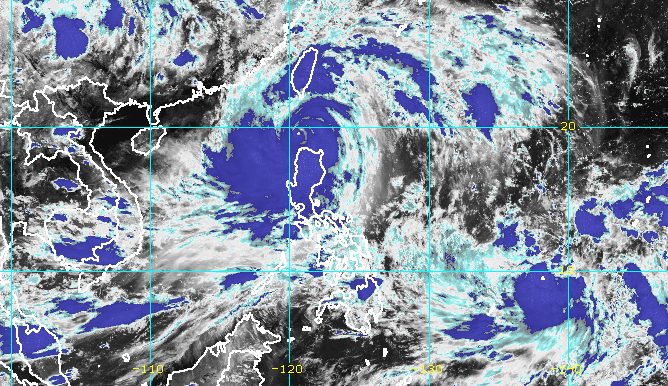
MANILA, Philippines – Typhoon Egay (Doksuri) slightly weakened as it accelerated over the Luzon Strait, which lies between Luzon and Taiwan, early Wednesday evening, July 26.
Egay’s maximum sustained winds decreased from 175 kilometers per hour to 165 km/h, said the Philippine Atmospheric, Geophysical, and Astronomical Services Administration (PAGASA) in its 8 pm bulletin on Wednesday. The typhoon’s gustiness also eased from 240 km/h to 230 km/h.
Egay previously reached a peak intensity of 185 km/h, as a super typhoon.
It was located 95 kilometers west northwest of Calayan, Cagayan, at 7 pm on Wednesday, moving northwest at a slightly faster 15 km/h from 10 km/h.
Egay is expected to head northwest or north northwest and pass over the waters south and southwest of Taiwan, which is within the Philippine Area of Responsibility. Then it could exit PAR on Thursday morning, July 27.
As of 8 pm on Wednesday, Signal No. 4 had already been lifted. Here are the areas still under tropical cyclone wind signals:
Signal No. 3
Storm-force winds (89 to 117 km/h), moderate to significant threat to life and property
- northwestern part of Ilocos Norte (Bangui, Pagudpud, Burgos, Pasuquin)
Signal No. 2
Gale-force winds (62 to 88 km/h), minor to moderate threat to life and property
- Cagayan including Babuyan Islands
- Batanes
- rest of Ilocos Norte
- northern and central parts of Ilocos Sur (Gregorio del Pilar, Magsingal, San Esteban, Banayoyo, Burgos, Candon City, Santa Lucia, Santiago, San Vicente, Santa Catalina, Lidlidda, Nagbukel, Sinait, Suyo, Sigay, San Ildefonso, Galimuyod, Quirino, Vigan City, San Emilio, Cabugao, Caoayan, San Juan, Santa, Bantay, Santo Domingo, Santa Cruz, Santa Maria, Narvacan, Salcedo, Tagudin, Cervantes)
- Kalinga
- Abra
- Apayao
- western part of Mountain Province (Besao, Sagada, Bontoc, Sadanga, Tadian, Sabangan, Bauko)
Signal No. 1
Strong winds (39 to 61 km/h), minimal to minor threat to life and property
- Isabela
- Quirino
- Nueva Vizcaya
- rest of Ilocos Sur
- La Union
- Pangasinan
- rest of Mountain Province
- Ifugao
- Benguet
- Zambales
- Aurora
- Nueva Ecija
- Tarlac
- Pampanga
- northern part of Bataan (Morong, Samal, Orani, Hermosa, Dinalupihan)
- northern part of Bulacan (Hagonoy, Doña Remedios Trinidad, Paombong, Malolos City, Plaridel, Guiguinto, Pandi, Bustos, Angat, Calumpit, Pulilan, Baliuag, San Rafael, San Ildefonso, San Miguel)
“Violent, life-threatening conditions are expected to continue over Babuyan Islands, the northwestern portion of mainland Cagayan, and the northern portions of Apayao and Ilocos Norte in the next 6 hours,” PAGASA warned.
The weather bureau also maintained its rainfall forecast for the rest of Wednesday until Thursday afternoon. There could be even more floods and landslides as rain from Egay persists.
- Above 200 millimeters (mm): northwestern part of Cagayan including Babuyan Islands, Ilocos Norte
- 100-200 mm: Batanes, Ilocos Sur, rest of Cagayan, Apayao, Abra
- 50-100 mm: Zambales, rest of Cordillera Administrative Region, rest of Ilocos Region
Egay made landfall twice in Cagayan province on Wednesday, with the first one in Fuga Island, Aparri, at 3:10 am, and the second one in Dalupiri Island, Calayan, at 9:30 am.

There is still a high risk of storm surges which may cause floods in the low-lying and exposed coastal areas of the following provinces:
- Batanes
- Cagayan including Babuyan Islands
- portions of Isabela
- Ilocos Norte
- portions of Ilocos Sur
“Maximum surge heights may exceed 3 meters in most of the warning areas,” PAGASA said.
For coastal waters, the weather bureau issued another gale warning at 5 pm on Wednesday, covering these seaboards:
- seaboards of Northern Luzon (Ilocos Norte, Ilocos Sur, La Union, Batanes, Cagayan including Babuyan Islands, Isabela) – rough to very high, with waves 3.7 to 12.1 meters high
- eastern seaboard of Central Luzon (Pangasinan, Aurora) – rough to very rough, with waves 3.1 to 6 meters high
- western seaboards of Central Luzon and Southern Luzon, western seaboard of Visayas (Zambales, Bataan, Occidental Mindoro, Palawan including Kalayaan, Calamian, Cuyo, and Cagayancillo islands, Negros Occidental, Guimaras, Iloilo, Capiz, Aklan, Antique) – rough to very rough, with waves 2.8 to 4.5 meters high
- southern and eastern seaboards of Southern Luzon (Metro Manila, Cavite, Batangas, Marinduque, Romblon, Masbate including Ticao and Burias islands, Quezon including Polillo Islands, Camarines Norte, Camarines Sur, Catanduanes, Albay, Sorsogon) – rough to very rough, with waves 2.8 to 4.5 meters high
- central and eastern seaboards of Visayas (Northern Samar, Eastern Samar, Samar, Biliran, Bohol, Cebu, Negros Oriental, Siquijor) – rough to very rough, with waves 2.8 to 4.5 meters high
Travel is risky for all vessels in areas with rough to very high seas, while travel is risky for small vessels in rough to very rough seas.
Meanwhile, Egay is still enhancing the southwest monsoon or habagat, which has also been dumping rain. These areas are most affected by the enhanced southwest monsoon, and must stay on alert for floods and landslides:
Wednesday, July 26
- 100-200 mm: Occidental Mindoro
- 50-100 mm: Western Visayas, northern part of Palawan including Cuyo, Calamian, and Kalayaan islands, Antique
Thursday, July 27
- 100-200 mm: Occidental Mindoro
- 50-100 mm: Pangasinan, Zambales, Bataan, Batangas, northern part of Palawan including Cuyo, Calamian, Kalayaan, and Cagayancillo islands
Friday, July 28
- 50-100 mm: La Union, Pangasinan, Zambales, Bataan, Occidental Mindoro, northern part of Palawan including Cuyo, Calamian, and Kalayaan islands
In Metro Manila, there is still occasional rain, which could be moderate to heavy.
Gusty conditions, also due to the enhanced southwest monsoon, may persist in these areas as well:
Wednesday, July 26
- Luzon, Visayas
Thursday, July 27
- Luzon, Western Visayas
Friday, July 28
- Batanes, Ilocos Region, Zambales, Bataan, Cavite, southern part of Quezon, Mimaropa, Bicol, Western Visayas
PAGASA added that the enhanced southwest monsoon will cause moderate to rough seas in the coastal waters of Mindanao. Small vessels should take precautionary measures as waves may be 2 to 3 meters high.
Once Egay leaves PAR, it is projected to cross the Taiwan Strait and make landfall in Fujian, China, on Friday morning, July 28.
PAGASA also said Egay may weaken, “although the rate of weakening will not be rapid due to [a] slightly favorable environment offsetting the impact of land interaction with the rugged terrain of Northern Luzon and Taiwan.”
But once Egay makes landfall in Fujian and moves inland over mainland China, “a more rapid weakening is expected,” added the weather bureau. The tropical cyclone might degenerate into a remnant low by Saturday, July 29.
Egay is the Philippines’ fifth tropical cyclone for 2023 and the second for July. PAGASA earlier estimated that two to four tropical cyclones would form inside or enter PAR during the month.
The weather bureau said on Wednesday that it is monitoring a new low pressure area (LPA) located outside PAR.
The LPA was last spotted 1,615 kilometers east of northeastern Mindanao on Wednesday afternoon.
PAGASA advised the public to monitor updates on the LPA in the coming days. – Rappler.com
Add a comment
How does this make you feel?




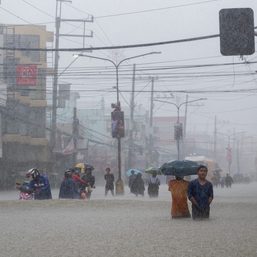
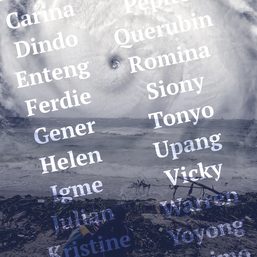
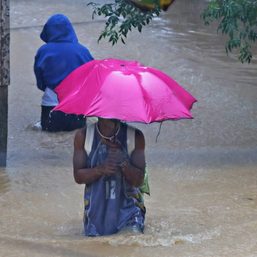
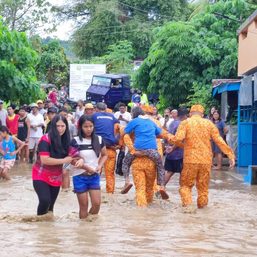
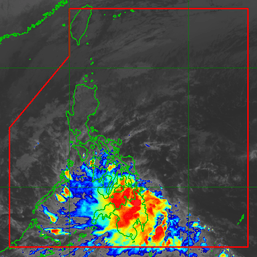
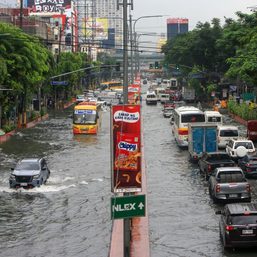
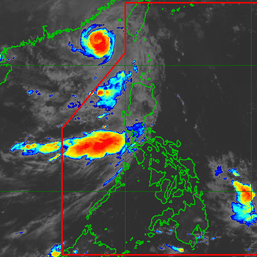
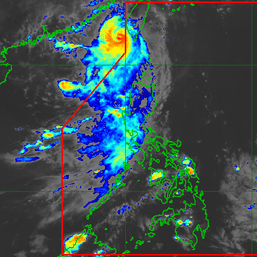
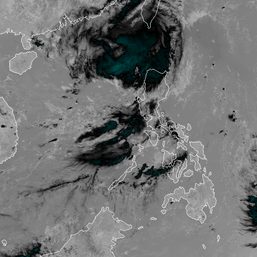
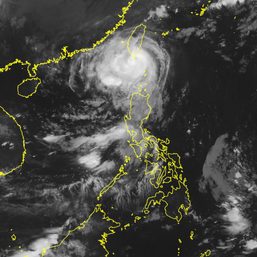
There are no comments yet. Add your comment to start the conversation.